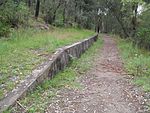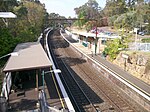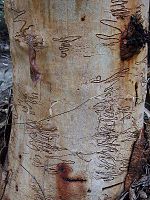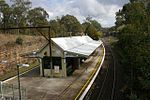RAAF Base Glenbrook
RAAF Base Glenbrook (ICAO: YGNB) is a Royal Australian Air Force (RAAF) base located in Glenbrook, in the Lower Blue Mountains, approximately 60 kilometres (37 mi) west of the Sydney central business district in New South Wales, Australia. The base serves as home to Headquarters Air Command of the RAAF. There is no airfield although it has a heliport, or helicopter landing site (HLS) and most administrative services are located on the nearby RAAF Base Richmond. Parts of the 28-hectare (69-acre) site are heritage-listed and comprise the Officers' Mess, once the Lapstone Hotel.During World War Two, men stationed at the base co-ordinated the stockpiling of mustard gas in the disused Glenbrook railway tunnel.In 2009 the Minister for Defence, John Faulkner, announced that the base would be closed by 2015, and its command operations transfer to RAAF Base Amberley. Closure has yet to occur.
Excerpt from the Wikipedia article RAAF Base Glenbrook (License: CC BY-SA 3.0, Authors).RAAF Base Glenbrook
Knapsack Street, Sydney
Geographical coordinates (GPS) Address Nearby Places Show on map
Geographical coordinates (GPS)
| Latitude | Longitude |
|---|---|
| N -33.763333333333 ° | E 150.63666666667 ° |
Address
Knapsack Street
2773 Sydney
New South Wales, Australia
Open on Google Maps








